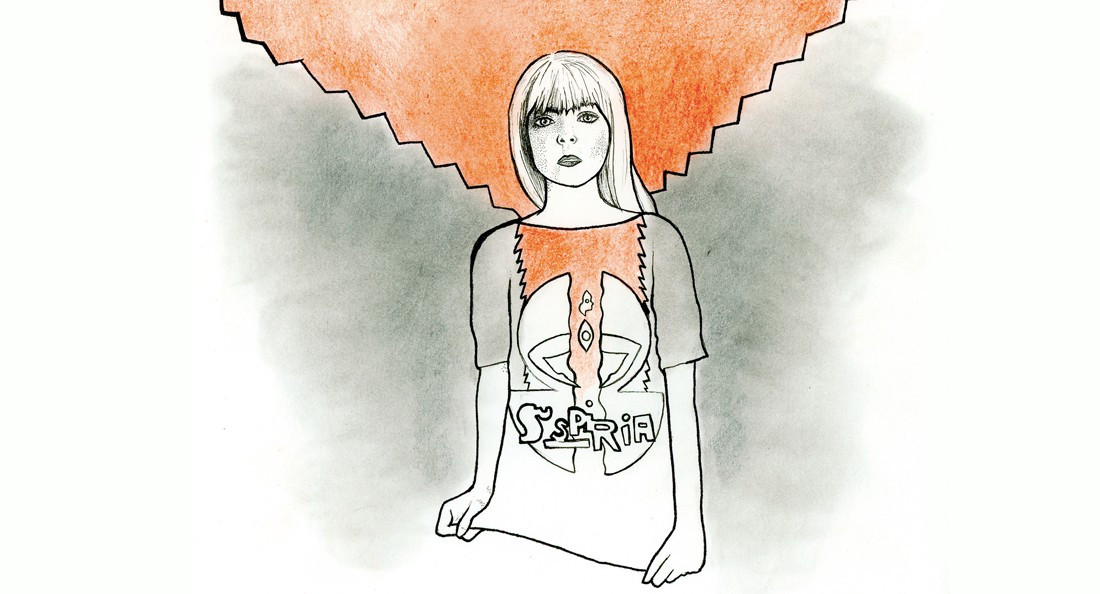Spoiler alert: Horror is smart
(and it always has been)
Some weeks ago, in a moment of spontaneity sponsored by happenstance and financial permission, I treated myself to the recently-released Suspiria remake.
Directed by Luca Guadagnino, who helmed the 2017 critical darling Call Me by Your Name, this remake/reworking of Dario Argento’s 1977 giallo classic is brutal, strange, weird and pretty impressive given the extremes it goes to in order to convey its terrifying story.
Unlike the original, this remake is strangely political and fiercely feminist, shifting the focus from trying to survive witchy evils and instead centres on the arcane politics and in-fighting among a coven and the ballet school they control. It’s unabashedly bizarre, especially in how much it diverges from the original.
Suspiria is the latest in a fantastic trend of “smart” horror films, all existing within the rather silly umbrella term of “post-horror.” Possibly kicking off with films like It Follows and The Witch, this new “post-horror” movement comes off the heels of the overly gratuitous “torture porn” fad brought on by Saw and Hostel, trading in gruesome spectacle for cerebral, thematic chills.
Its arrival and dominance in modern cinemas, unlike what came before it, has moved beyond art-house theatres and is now in fully visible widespread releases.
Of all the trends currently going on in modern horror cinema, everything from “torture porn” to the New French Extremity, to the rising popularity of “disturbing cinema” on the internet and the deeply prevalent 1980s aesthetic nostalgia, “post-horror” has risen to the top.
These films bring about a whole new existential bent to the brutality and visceral nature of the cinematic medium, but believe it or not, this isn’t anything new.
The most recent heavy-hitters of the new “post-horror” movement (a term coined by The Guardian journalist Steve Rose in 2017) have been films like It Comes at Night, A Ghost Story, The Killing of a Sacred Deer, It Follows, The Witch, Personal Shopper, Get Out, The Neon Demon and, one of my personal favourites, Hereditary, from earlier this year.
All these films have been hits with critics, but due to the traditions and typical practices one of film marketing, audiences watch them then immediately take to Twitter to lambaste it to the bottom of aggregate sites’ lists of the worst movies of the year.
Mainstream audiences don’t go to the movies expecting a philosophical slow-burn-a-thon of pure dread. Films like The Conjuring and Insidious and the Paranormal Activity series are immediate, jumpscare-reliant films that satisfy on the spot. These new films are built on the idea of dragging an audience slower and slower into nightmare worlds with the intention of sending them home altered and disturbed.
This new wave of horror is deserving of a lot of attention and praise, both returning the genre to its headier moments of the past, as well as revamping it for a new generation of film fans who can appreciate substance over style much more easily. But the most daring aspect of them, undoubtedly, are the heavy thematic qualities that elevate even the most disjointed or misguided of these films.
I can recall immediately leaving the Towne Cinema with a friend after seeing Darren Aronofsky’s Mother!, which was dividing critics and audiences like a post-millennia Red Sea. I had loved the bizarre, biblically-minded psychological horror film, but my friend had come to despise it so greatly that it’s now a running joke amongst us both.
I can remember the confusion over A Ghost Story’s longest shot, an uninterrupted pie-eating scene with Rooney Mara, as well as the outrage over the misleading ad campaigns for movies like The Witch and It Comes at Night.
All these movies, and the numerous others in their league, have been sparking healthy, impassioned debate among cinephiles, helping to continue the tradition of thematic horror.
Consider these examples: David Cronenberg’s legendary remake of The Fly has been seen as a metaphor for the AIDS crisis; Invasion of the Body Snatchers, the original from 1956, is one of the great warnings against McCarthyism; and the ultimate giant monster movie, 1954’s Godzilla (Gojira as it’s known in its native Japanese) has remained a symbol of nuclear destruction gone unchecked.
Now look at today’s movies: Hereditary is a thrill ride of familiar trauma and mental illness against a supernatural backdrop; Get Out explores the uncomfortable realities of racial tensions and liberal ignorance; It Comes at Night uses its post-apocalyptic setting to tackle paranoia in the face of survival; and head trips like mother! and A Ghost Story are strange, surreal experiences that tackle everything from the passage of time to our abusive relationship with the environment.
Horror has always been deeply metaphorical and far more heady than one might realize, but it’s easily exploitable nature has resulted in a flurry of trashy, low-budget B-movies that continue to drown out those who have something to say.
In the light of all this, I believe that the current “post-horror” movement, while not anything new or too exciting, is certainly helping to make horror interesting again.
Enjoy it while it lasts, everyone. Go see these movies, get adventurous and open your mind to the possibilities of this new wave of “smart” horror films. Even if you hate them, you won’t leave without something to bring to the debate.
Mason Chennells is a first-year English student hoping to major in creative writing. He currently runs the U of W Speculative Writers' Society. Mason has been published in other publications such as Taste of Cinema, The Metal Observer and the Sunday Night Black & White zine.
Published in Volume 73, Number 13 of The Uniter (January 10, 2019)







